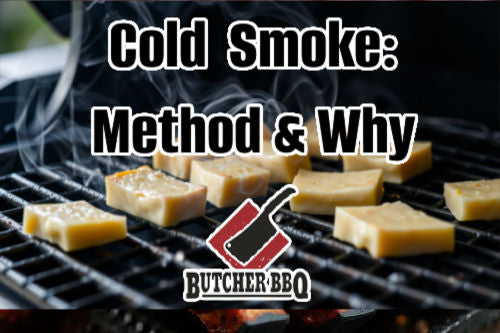
Unlock the Secrets of Cold Smoking: A Flavorful Journey
In the world of BBQ and grilling, there's a technique that takes flavor to new heights - cold smoking. While hot smoking is the more common method, cold smoking offers a unique and captivating experience for the adventurous home cook. If you're ready to explore the art of cold smoking and unlock a world of tantalizing flavors, then this guide is for you.
What is Cold Smoking?
Cold smoking is a technique that involves exposing food to smoke at low temperatures, typically between 68°F and 86°F (20°C and 30°C). This process differs from hot smoking, where the food is cooked at higher temperatures, usually between 225°F and 275°F (107°C and 135°C). The key distinction is that cold smoking does not cook the food; instead, it infuses it with a rich, smoky aroma and flavor.
The lower temperature range in cold smoking allows the food to absorb the smoke without undergoing significant cooking or drying. This makes it an ideal method for preserving the natural texture and moisture of the ingredients, while still imparting a delightful smoky essence.
The Process of Cold Smoking
The process of cold smoking requires patience and attention to detail. It typically involves the following steps:
- Temperature Control: Maintaining a consistent temperature range is crucial for successful cold smoking. The ideal temperature should be between 68°F and 86°F (20°C and 30°C). This low-temperature environment ensures that the food is not cooked, but rather infused with the smoky flavor.
- Duration: Cold smoking can take several hours, or even days, depending on the type of food and the desired level of smoke penetration. The duration can range from as little as 4 hours for some foods to as long as 24-48 hours for larger cuts of meat or fish.
- Equipment: To cold smoke, you'll need a dedicated smoker or a setup that allows you to separate the heat source from the smoking chamber. Using smoke tubes will allow you ot accomplish this in a standard backyard grill or smoker. This ensures that the food is exposed to the smoke without being directly exposed to the heat. Common equipment used for cold smoking includes a smoker box, a cold smoke generator, or a DIY cold smoking setup.
Foods Suitable for Cold Smoking
Cold smoking can be applied to a wide variety of foods, each with its own unique flavor profile and benefits. Some of the most common items that can be cold smoked include:
- Meats: Pork, beef, lamb, and poultry can all be cold smoked, resulting in a delicate, smoky flavor that enhances the natural taste of the meat.
- Fish: Salmon, trout, mackerel, and other oily fish are excellent candidates for cold smoking, as the process helps to preserve their texture and flavor.
- Cheese: Hard and semi-hard cheeses, such as cheddar, gouda, and gruyère, can be cold smoked to create a delightful smoky and creamy combination.
- Vegetables: Vegetables like tomatoes, onions, garlic, and peppers can be cold smoked to add a subtle smoky note to their flavor profile.
Techniques for Successful Cold Smoking
Achieving the perfect cold-smoked result requires attention to a few key techniques:
- Wood Selection: The type of wood used for the smoke can significantly impact the flavor. Popular options include hickory, oak, maple, and applewood, each offering its own unique aroma and taste.
- Temperature Maintenance: Ensuring a consistent temperature range is crucial. Monitoring the temperature and making adjustments as needed is essential for consistent results.
- Food Preparation: Proper preparation of the food, such as brining or curing, can enhance the absorption of the smoke and improve the final texture and flavor.
The Benefits of Cold Smoking
Cold smoking offers several benefits that make it a valuable technique in the world of BBQ and culinary exploration:
- Flavor Enhancement: The slow infusion of smoke into the food creates a depth of flavor that is difficult to achieve through other cooking methods. The smoky notes can complement and elevate the natural flavors of the ingredients.
- Preservation: The low-temperature environment and the antibacterial properties of smoke can help to preserve the food, extending its shelf life without compromising its quality.
Safety Considerations
While cold smoking is a rewarding process, it's important to prioritize food safety. Proper curing and handling of the food are essential to prevent the growth of harmful bacteria. Always follow food safety guidelines and consult reliable sources for specific recommendations on curing and storage.
Conclusion
Cold smoking is a captivating and flavorful journey that allows you to unlock a new dimension of taste in your culinary creations. By understanding the process, selecting the right equipment, and mastering the techniques, you can elevate your BBQ and grilling skills to new heights. So, grab your smoker, choose your favorite wood, and embark on a delicious adventure in the world of cold smoking. Your taste buds will thank you!




